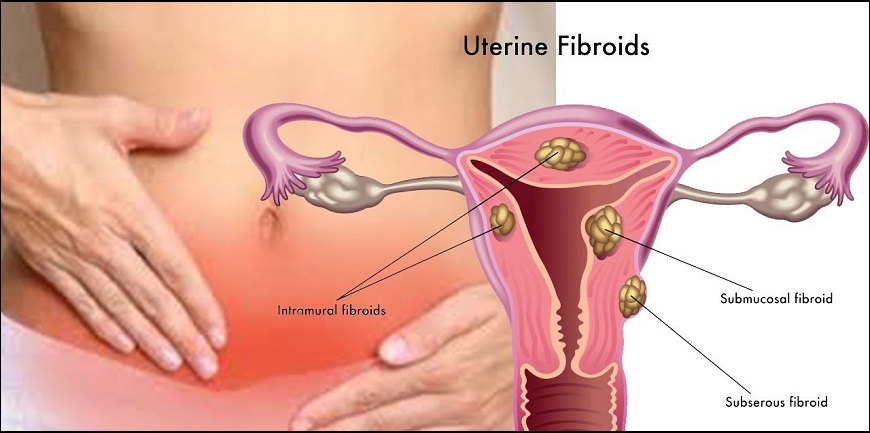A uterine myoma is a benign growth of smooth muscle in the wall of the uterus. Description of Uterine Myomas : A uterine myoma (myoma uteri) is a solid tumor made of fibrous tissue, hence it is often called a 'fibroid' tumor. Myomas vary in size and number, are most often slow-growing and usually cause no symptoms. Myomas that do not produce symptoms do not need to be treated. Approximately 25% of myomas will cause symptoms and need medical treatment. Myomas may grow as a single nodule or in clusters and may range in size from 1 mm to more than 20 cm in diameter. Myomas are the most frequently diagnosed tumor of the female pelvis and the most common reason for a woman to have a hysterectomy. Although they are often referred to as tumors, they are not cancerous.
Myoma Symptoms :
Symptoms of myoma include:-
What Causes Myoma?
The cause of myomas has not actually been determined, but most uterine myomas develop in women during their reproductive years. Myomas do not develop before the body begins producing estrogen. Myomas tend to grow very quickly during pregnancy when the body is producing extra estrogen. Once menopause has begun, myomas generally stop growing and can begin to shrink due to the loss of estrogen.
Removal of Fibroids:
Myomectomy is an operation to remove fibroid tumours (myomas) from the uterus. This retains the uterus, and is an alternative treatment to hysterectomy. It is sometimes a more difficult operation than hysterectomy but preserves reproductive choice for the patient.
Advantages of laparoscopic myomectomy:-
How does laparoscopic myomectomy work?
Preoperative preparation involves a shave and a small enema, and you will need to fast for six hours before the operation.
Recovery after fibroid removal:-
Immediate post-operative recovery involves an average of two days in hospital. A fifth of patients can go home late the next day after surgery, and about 80% patients are home in two days. Patients are welcome to rest in hospital for as long as they need to. One in five patients will only need tablets and not injections for postoperative pain relief. If injections are required about two are needed on average. Patients will be given as much pain relief as they request to make sure they are comfortable. A low-grade temperature is common in the first few days after surgery. The first few days at home should be taken very easily. The patient should have someone to help. Plenty of rest and fluids are advisable. Exercise your calf muscles to prevent clots. Oral pain relief such as Panadeine or Panadol may be needed, especially at night. Graded recovery over the next few weeks will occur. Gentle increasing exercise is helpful. Driving is permissible. Expect to tire easily. Bowel discomfort and some cramps are common. Return to normal activity occurs at about 2-3 weeks for many patients. All patients should individually assess their recovery rate. Some may need more time off work than others and certificates will always be provided. It is important not to have sexual intercourse for six weeks after the operation.
